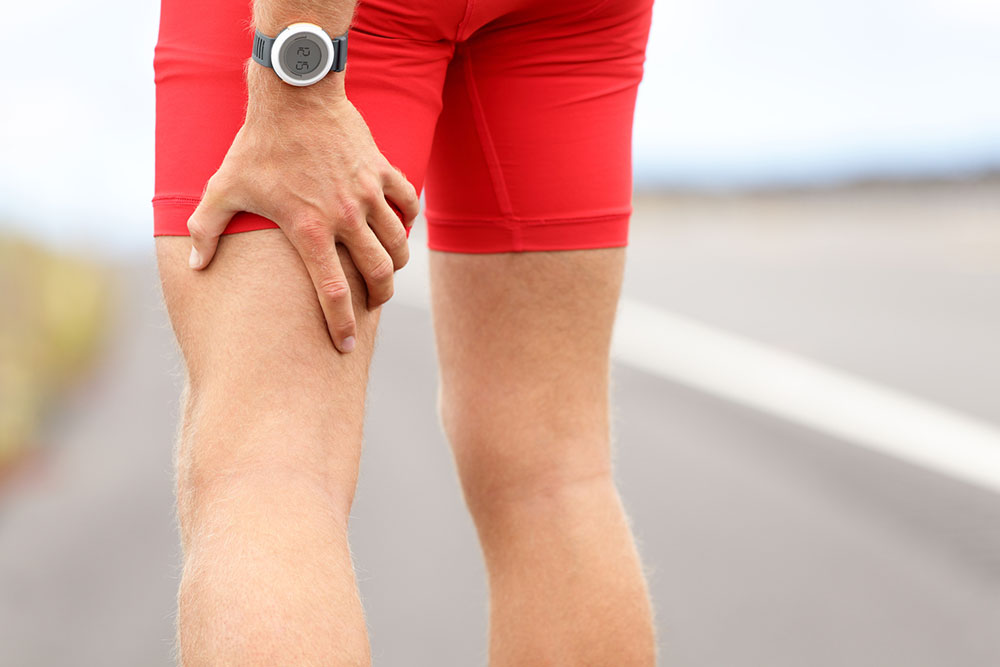
Types, symptoms, and remedies for hamstring injuries
Hamstrings are muscles at the back of the thigh that are essential to mobility. But when there is a strain or pull in any of the muscles, it can cause a hamstring injury. It usually occurs due to muscle overload in people participating in athletic activities like sprinting, climbing, jumping, or lunging. This type of muscle injury is also common in teens. Read on to learn the types, symptoms, and treatments for a hamstring injury.
Types
The three types of hamstring injuries are:
Grade 1
One faces a sudden pain in the back of the thigh. A mild strain may cause some pain and minimal swelling. Though the strength of the muscle is not affected, there might be pain while moving the leg.
Grade 2
One suffers a partial muscle tear, and there may be pain while walking or during other activities. This grade is worse than Grade 1, and it may be difficult to straighten the leg. This type of hamstring injury may cause swelling and bruising and lead to loss of strength in the leg.
Grade 3
In a complete muscle tear, there is a popping feeling at the time of injury. There is a tear in one or more of the hamstring muscles, and one might be in extreme pain. There will also be tenderness, swelling, and bruising, making it difficult to stand and walk.
Symptoms
The symptoms vary depending on the severity of the hamstring injury. Mild cases may not be painful, but severe hamstring injuries may make it impossible to walk or stand.
Sudden, severe pain
A hamstring injury causes sudden and severe pain due to the overstretching of muscles. In severe cases, there might be difficulty in moving or straightening the leg and bending over.
Popping or tearing sensation
A popping or tearing sensation at the time of injury is usually the first symptom of a hamstring injury.
Tenderness
Within a few hours of getting the injury, there might be swelling or tenderness in the affected leg.
Bruising or change in skin color
In case of severe injury, the affected leg may have a bruised appearance, or the skin color may change after a few hours.
Home remedies
Mild to moderate hamstring injury can be cared for at home and usually gets better in a few days. R.I.C.E(Rest, Ice, Compression, and Elevation) formula is a home remedy for restoring muscle function and healing hamstring injuries. This formula should be used as soon as possible after the injury to get relief from the pain. Here are some other home remedies for the injury.
Give the injured leg sufficient rest
Take a break from activities and rest the leg for 48 to 72 hours. It is best to try to avoid putting weight on the affected leg.
Use ice packs
After the injury, ice packs should be applied every three to four hours for 20 to 30 minutes. This helps reduce pain and swelling caused due to hamstring strain. Wrap the ice pack in a towel to prevent skin tissue damage.
Wrap with a compression bandage
To minimize pain and swelling, wrap a compression bandage or thigh sleeve for a day or two. Avoid wrapping it too tightly.
Elevate the affected leg
When sitting or lying down, the leg should be elevated as much as possible to reduce swelling. If possible, raise the leg should be raised higher than the heart.
Treatment
It is important to see a doctor if the symptoms are getting worse, and the injury does not seem to be healing. Hamstring injuries can be treated by primary care physicians, orthopedic doctors, or physiotherapists. Partial or complete muscle tear may require the following treatments.
Immobilization
In some cases, wearing a splint for a few days might help. A splint will keep the affected leg in a neutral position, allowing it to rest and heal.
Physical therapy
One’s healthcare provider or physical therapist may recommend hamstring stretching and strengthening exercises that will help restore motion and strength.
Surgery
In rare cases, surgery may be needed when the hamstring has pulled completely away from the bone. In this procedure, the surgeon will pull the muscle back in place, removing any scar tissue. The muscle is then reattached to the bone using small devices known as anchors. Crutches or a brace may be necessary for some time to keep the pressure off the leg. Recovery from surgery may take several months of rest and physical therapy.
Conclusion
Hamstring injuries cannot be prevented. However, regular stretching and strengthening exercises and warming up before workouts may help reduce the possibility of a hamstring injury. Recognizing early signs of injury, such as muscle fatigue, can also go a long way towards preventing the condition. In case of severe injury, one should follow one’s doctor’s advice and not get back to sports or other activities too soon as hamstring injuries can re-aggravate quickly.




